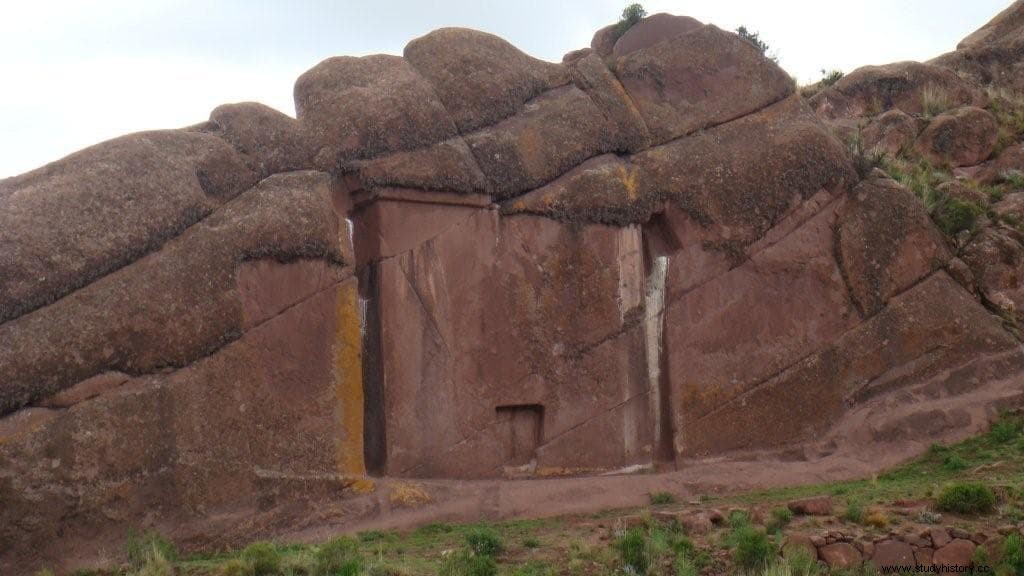The Ilave district is one of the five that make up the Peruvian province of El Collao, located in the south of the country in the department of Puno. There, halfway between the cities of Ilave and Juli and near Lake Titicaca and the border with Bolivia, is a rocky structure that for a few decades has sparked the imagination of many.
It is called the Gate of Aramu Muru, and also of Hayumarca (in Quechua), and although it has nothing paranormal or supernatural, it does harbor a small mystery, since it is not known what the Incas (or whoever sculpted it) wanted to represent. here or why it was left unfinished.
It is an architectural relief carved into a rocky outcrop, with a kind of blind door, which has the shape of a square with a side of 7 meters. The supposed door has a height of 1.98 meters. It was discovered in the early 1990s, apparently by a tour guide named Jorge Luis Delgado Mamani, and since then it has been one of the main attractions in the area.

Area that is known as Valley of the Spirits and also as Stone Forest , and is filled with whimsically shaped rock formations that seem to resemble animals, buildings, and other structures, but are of natural origin. For this reason, the door could also have a natural origin instead of a human one. The fact is that no archaeological analysis has ever been carried out.
Of course there is no shortage of legends about it. It seems that the natives already considered the place sacred and spoke of a door to the lands of the gods . But the most successful one is quite recent, appearing in a book a few decades ago, in which it is told that an Inca priest fled from the Spanish with a golden disk known as the key of the gods of the seven rays , he found the door and with a magical ritual he was able to cross to the other side opening it with the disk.
Lovers of paranormal theories and cosmic portals are able to pinpoint the gap where the supposed priest inserted the disk that he had taken from the Coricancha, the main Inca temple whose ruins can still be seen in the city of Cuzco. There is a writer of this type of subject who even claims to have crossed the door, which is certainly difficult to believe.
Today excursions and guided visits to the curious portal are organized from nearby towns, and sites like Instagram are full of photos of tourists who crush themselves against the hollow of the rock, trying to imitate the unique Inca priest, whose name by the way, must have been Aramu or Amaru, hence the name of the place.
Fonts
Labyrinthina / Cronica Andina (Fernando E. Martinez) / Andean Awakening (Jorge Luis Delgado) / Wikipedia
